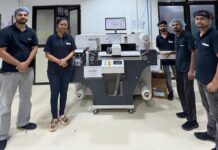
Pharmaceutical packaging plays a crucial role in preserving and delivering a medical product successfully. Along with the pharmaceutical industry, the pharma packaging industry is also progressing.A good pharmaceutical packaging serves multiple purposes such as providing identity, containment and protection, thereby helping patients with safe delivery and important compliances. Pharma packaging is used to disseminate important information regarding the drug including contents or chemical formula, usage, storage, dosage, and precautions related to usage, date of manufacture and expiry and batch number amongst others. Packaging is also instrumental in building a relationship between the drug and the patient or consumer. Packaging in the pharma sector has an additional role to play because itis also related to safety, convenience and in the case of challenged users to the accessibility of the packaging by the patient.
Designing novel packaging solutions for pharmaceuticals is complex and costly as brand owners demand compliant, userfriendly and sustainable packaging products. The design of pharmaceutical packaging should be such that the product can be administered in as a manner to the patient. This facilitates inincreasingtheacceptabilityofthedrug. However, packaging must not only increase acceptability through its design, but also protect the patient and keep the integrity of the product intact.A tamper-evident device is important as it protects against incidental and accidental poisoning.
More and more innovations pourinaspharmaMNCsadopttoFMCGmodelsofbusiness.The handy tube increases the shelf life of the product by increasing the available moisture throughout the product storage. Modern efforts in pharma packaging endeavour to provide anti-counterfeiting mechanisms to check spurious drugs in the market. Several IT and software-based track and trace solutions are being provided. In addition, labelling of OTC products also requires coding by which consumers can connect via smartphones to understand their medication.
What’s in the packaging
Packagingbeginswithselectionof appropriate material. Performance ofpackage is the chief criteria defining the success of a pack. Traditionally, glass, plastic and metal has been used as primary packaging material. Crystalline and biologically derived plastics have opened newer avenues in packaging of pharmaceuticals. A goal of primary packaging is to promote the idea of sustainable packaging. Manufacturers are slowly bringing in plastics with improved performance such as Polyethylene Terephthalate (PET), Polypropylene (PP) which have started taking place of High-Density Polyethylene (HDPE) and Poly-Vinyl Chloride (PVC). In addition, there is increasing demand for eco-friendly pharmaceutical packaging or green packaging material as they are called which include starch, cellulose, xylan, chitosan and protein-based materials. Current requirements imply a need for the development of a single such agent.
As the pharma sector in India continues to grow steadily, so does the pharmaceutical packaging industry. Reports suggest that of the global pharmaceutical packaging market, which was pegged at US$ 47.8 billion in 2010, a significant share of it comes from India. World demand for pharmaceutical packaging has been forecast 5.5% annual growth through 2015. In an increasingly competitive pharmaceutical market, manufacturers must strive to remain competitive and appeal to the ever more informed consumer. The sales of any consumer product are determined by a series of factors; packaging being one of the most important.The case is no different for pharmaceuticals, where Pharma packaging is now required to fulfilits functional roles and at the same time, become more patient-friendly










